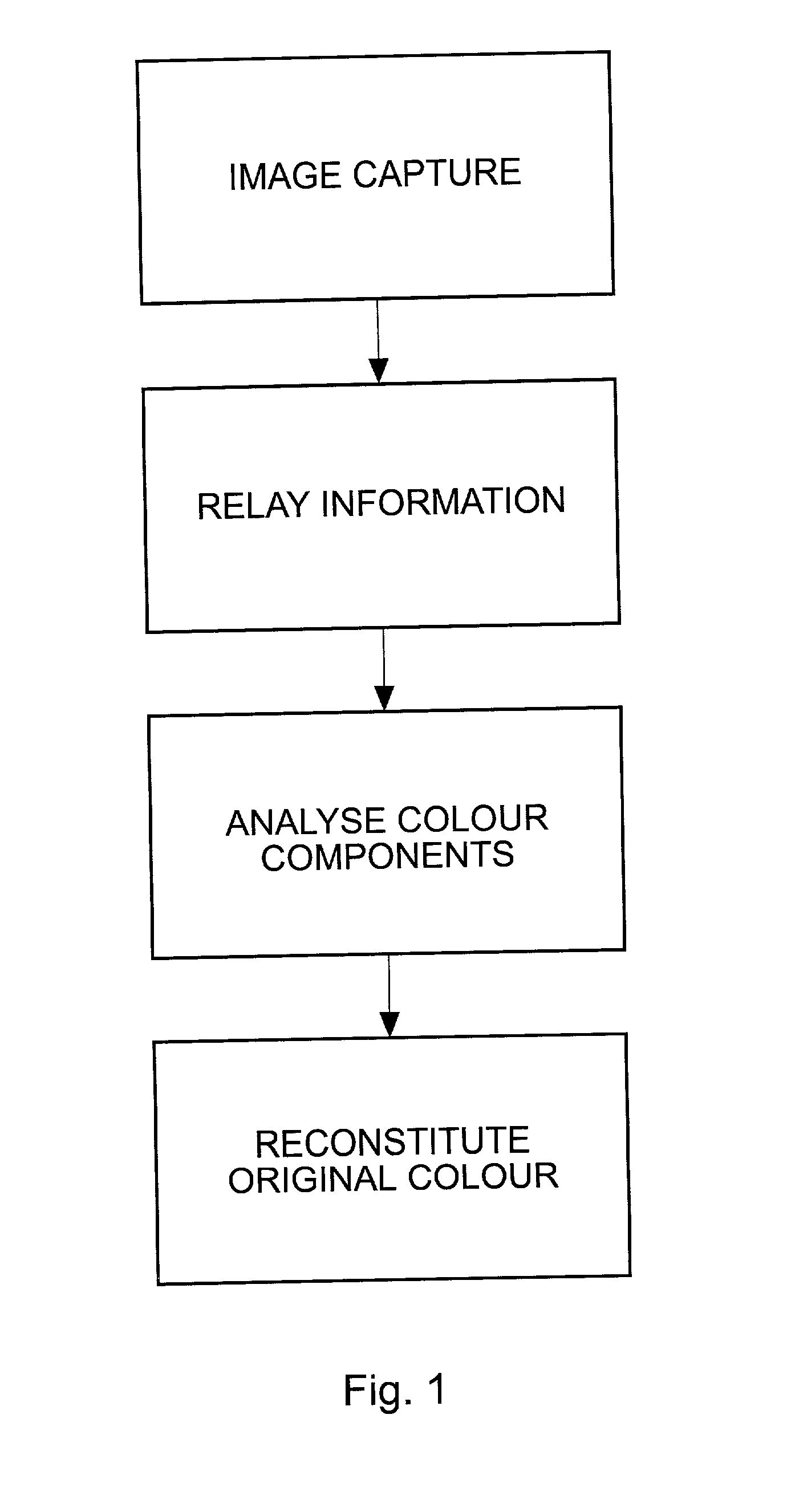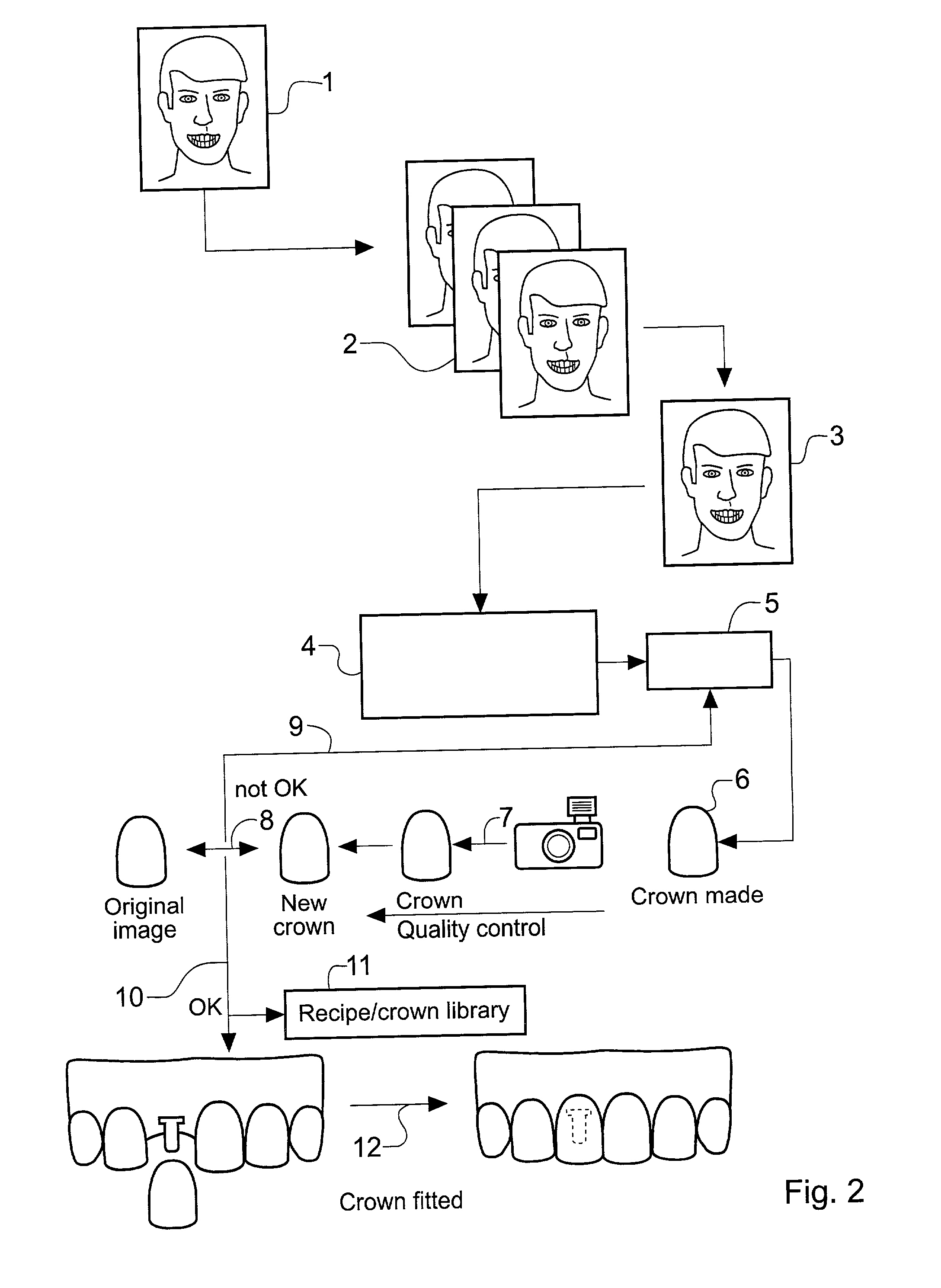Colour matching system
a colour matching and colour matching technology, applied in the field of colour matching systems, can solve problems such as colour mismatch, bright spot similar colour distortion, and difficulty in critically assessing highly reflective surfaces such as the enamel of teeth
- Summary
- Abstract
- Description
- Claims
- Application Information
AI Technical Summary
Benefits of technology
Problems solved by technology
Method used
Image
Examples
Embodiment Construction
[0087] With reference to FIG. 1 there is shown a flow diagram of the steps of the method of colour matching / identification of an object according to the present invention.
[0088] The first step of the method is to capture an image of an object which it is desired to colour match and / or colour identify. This is achieved by first illuminating the object with an appropriate light source and taking at least one photograph of it with a digital camera fitted with cross-polarised filtration. Optionally a colour reference indicator is included in the captured image (see FIG. 4). The camera can be pre-programmed to a specified focal length and arranged to be a selected distance away from the object in order to reduce variations in illumination conditions. The object could be a piece of textile, wall covering, part of a picture which needs to be restored or requires the original colour recorded for posterity, a car body part or a human face for which a suitable cosmetic / hair dye hue can be mat...
PUM
 Login to View More
Login to View More Abstract
Description
Claims
Application Information
 Login to View More
Login to View More - R&D
- Intellectual Property
- Life Sciences
- Materials
- Tech Scout
- Unparalleled Data Quality
- Higher Quality Content
- 60% Fewer Hallucinations
Browse by: Latest US Patents, China's latest patents, Technical Efficacy Thesaurus, Application Domain, Technology Topic, Popular Technical Reports.
© 2025 PatSnap. All rights reserved.Legal|Privacy policy|Modern Slavery Act Transparency Statement|Sitemap|About US| Contact US: help@patsnap.com



